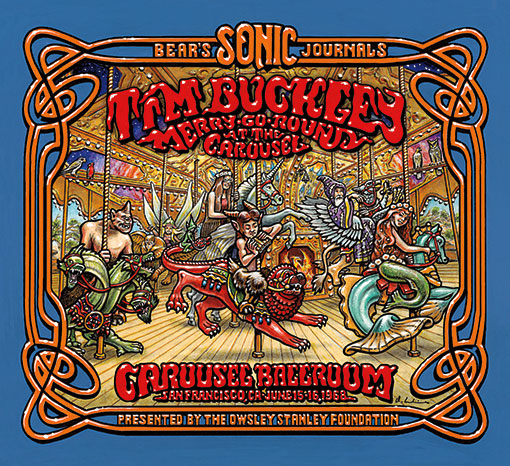
The July 10 edition of Greasy Tracks featured Alligator Records which celebrates 50 years of “genuine houserockin’ music” in 2021. Included in the program was an interview with Alligator founder Bruce Iglauer and music from across the 350-plus albums the label has released.
Click here to check out an archive of the program, while a playlist is here.
The iconic label — born at a perfect time when “underground”, “freeform” and “progressive” F.M. radio was on the rise — was in the thick of things as selling vinyl soon included analogue tape and in time, compact discs and then . . . streaming — has managed to prevail.
A native of Ann Arbor, Mich., Iglauer grew interested in what would become a lifetime passion: blues music. While a student at Lawrence Universirty in Appleton, Wisc., he attended a concert by Mississippi Fred McDowell at the 1966 University of Chicago Folk Festival which provided a personal revelation: he had to be involved with blues music.

Following a move to Chicago in 1970, Iglauer met Delmark Records’ founder Bob Koester and signed on for $30 a week as a shipping clerk at the independent, primarily jazz-focused label that would increase its’ blues roster over the years. At the same time, he was one of the founding writers of the then-quarterly Living Blues magazine in Chicago which was the nation’s first blues-specific publication.
Immersed in one of the nation’s traditional blue’s hotbeds, Iglauer now had the ability to see big-name players literally within blocks of singers and musicians who were either starting to gain attention or were completely unknown.
Hound Dog Taylor was one of those players who wasn’t that widely known and the person who would be the catalyst for Iglauer becoming the founder of a record label.

For nearly a year Iglauer tried to convince Koester to sign and record Taylor and his band, The HouseRockers, but each time, Koester said he wasn’t interested and suggested that Iglauer record Taylor.
Dedicated to making good on his goal to get Taylor recorded — at that time he and his group had released but two singles — Iglauer scraped together $2,700, got studio time and recorded the band on two-track and printed about 1,000 copies of what would become the debut release by Alligator Records: Hound Dog Taylor and the HouseRockers.
Juggling his work at Delmark and trying to shepherd his new label were massive challenges for Iglauer who was sleeping on a mattress on the floor of an efficiency apartment, using was two sawhorses and a slab of wood as a shipping table and often subsisting daily on an order of fries and a Quarter Pounder with cheese — a new sandwich introduced by McDonalds in 1971.
At one point, Iglauer was driving around major parts of the country, stopping at every freeform commercial and college radio stations he could manage to personally introduce Hound Dog Taylor and the Alligator label to on-air hosts.
In many cases, the reaction was immediate and positive as the album often went right on the air and got regular airplay. Iglauer signed on with distributors and left stacks of albums with them, ultimately forcing him to return home to get more printed. In the first year, Hound Dog Taylor and the HouseRockers would sell 9,000 copies, a substantial amount considering the independent status of Alligator. The album would also catapult Taylor out of tiny taverns and onto larger stages across the country and as word spread, performing as far away as Australia.

As business started growing at Alligator, Koester presented Iglauer with a decision his protégé would eventually have to make: was Iglauer going to remain working at Delmark or was he going to work for himself at Alligator?
Iglauer made the choice each man knew was inevitable — Iglauer was going to strike out on his own. Ever the supportive mentor, Koester would keep Iglauer on the payroll for the next eight months even though he was focusing on Alligator on a full-time basis and was technically “competing” with Koester.
It should be noted that Koester would run Delmark — the nation’s oldest jazz and blues independent label — until 2018 when he retired and sold it. Following his moving the label to Chicago from St. Louis in 1958, Koester opened the Jazz Record Mart, a destination for hardcore jazz and blues aficionados. The shop would have several locations around Chicago before Koester shuttered it in 2016. He would go on to open Bob’s Blues & Jazz Mart which he ran until his death in May at the age of 88.

When he went solo, Iglauer knew he had to put out a successful release each time if he was going to be able to fund a follow-up album. Acting at times as manager, roadie and publicist for Taylor, Iglauer went back to the role of producer and returned the band to Chicago’s Sound where they would record Natural Boogie, which would ultimately be Taylor’s final studio release as he passed away in 1975 at the age of 60.
Since he has since Day 1 at the label, Iglauer continues to be hands on. He has produced nearly one third of the 350 or so of Alligator’s releases. He is always looking for potential signings and to this day, rues his overlooking the opportunity to sign Stevie Ray Vaughan and Robert Cray.
“I heard the young Stevie Ray Vaughan. I thought, ‘Wow, he’s the world’s loudest Albert King imitator.’ I got it later; I didn’t get it then.”
–Alligator Founder Bob Inglauer
“I heard the young Robert Cray, too,” he continued. I thought, ‘Wow, he’s really good, but he wants to do all this R&B stuff. I wish he would do more blues.’”
Despite the ones he’s missed, the Alligator stable over the years has included some household names: Buddy Guy, Albert Collins, Charlie Musselwhite, James Cotton, Koko Taylor, Lonnie Brooks, Johnny Winter, Elvin Bishop, Roy Buchcanan and Shemekia Copeland to name but a few.
Alligator won its first Grammy Award in 1981 for I’m Here by zydeco legend Clifton Chenier. In 1985, Showdown! by Albert Collins, Johnny Copeland and Robert Cray would pave the way for a second Grammy Award for the label and the release remains Alligator’s most successful release.

One of Iglauer’s younger signings, Mississippi-based guitarist Christone “Kingfish” Ingram, represents one of the “future’s” of the blues, according to Iglauer who has known the guitarist since his early teens when he started generating interest based on his immense talent.
Heavily influenced by Muddy Waters, Ingram, 22, releases his second Alligator album, 662 on July 23. He debut, Kingfish, went to the top of the charts following its release in 2019.
In June, to mark the 50th anniversary, Iglauer released Alligator Records — 50 Years Of Genuine Houserockin’ Music, a three-CD, 57-track collection.



















